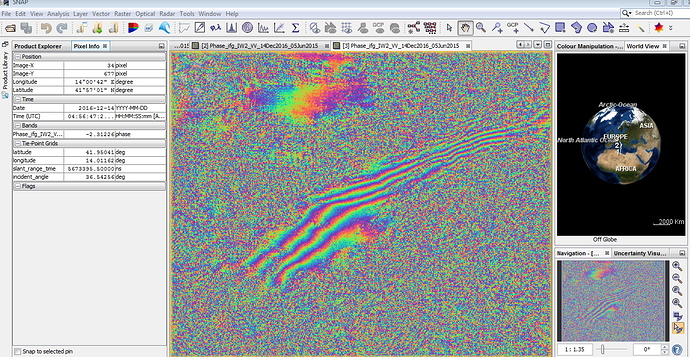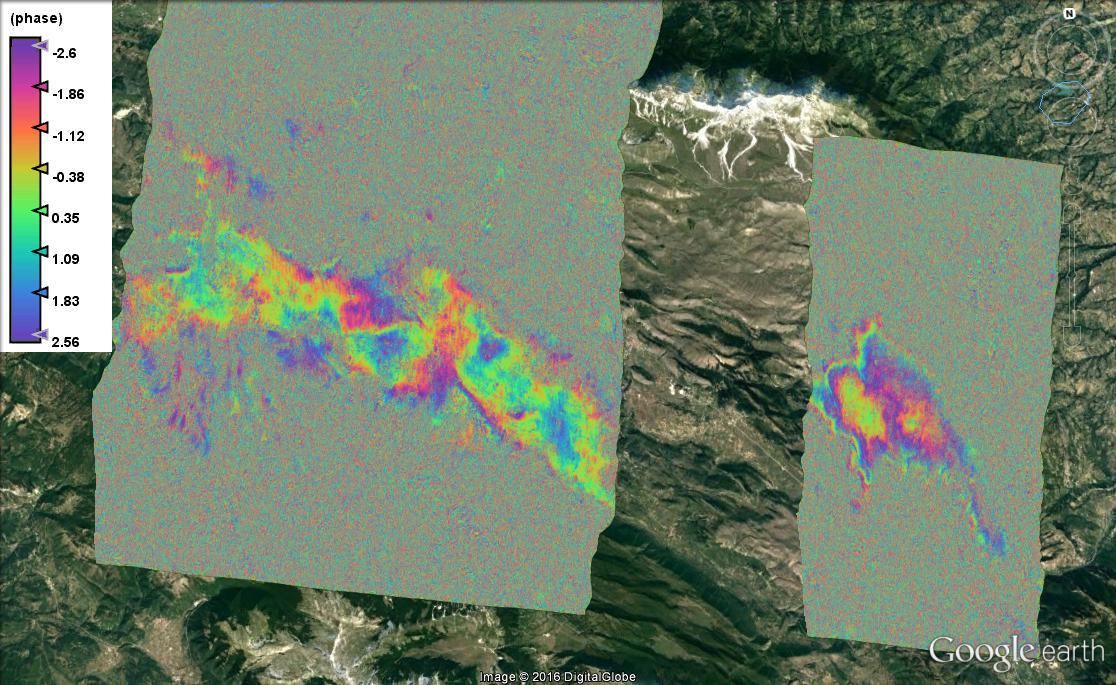Andreas, when multilooking an interferogram, it’s best not to select any bands. In this case it will multilook i and q and recreate a new virtual phase band with the resulting i and q. If you select just the phase band then it multilooks the phase band but the histogram will be different and the colours will look weird.
thanks for pointing that out. Of course you’re right - as phase is only a virtual band its origins (i and q) should be the actual input for multi-looking. So selecting no band is the best option.
Happy New Year to all!
how you can get a feeling for an area of your interest of subsistenza tectonics over time?, and how you can get an assessment of a volcanic area evaluating the paroxysm in time ??
thank you all.
you will find answers on most of your questions in here:
Hello friends .
In the attached photo after creating the file Interferometry you could kindly indicate how to measure it had moved ?? Thank you so much to all of you
please have a look at the links to other topics I posted above where exactly is described what you are looking for.
There are also links to some tutorials which describe it even better.
Thanks for the advice, I try!
Another courtesy, where I can download previous years 2009 SLC IW Sentinell?
Sentinel-1 was launched in 2013 
But you can use Envisat ASAR data (also C-band, 20 m resolution, data from 2002-2012) which is freely available for ESA users via the EOLi-SA catalogue.
Good evening to you all.
I would like to have a interrrogazone difference between two images of snow and avalanches. That file and that the proceedings should I do? File GRDH IW, or SLC? thank you
excuse me…
Good evening to you all.
I wish I had a query difference between two images of snow and avalanches. That file and that the proceedings should I do? File GRDH IW, or SLC? thank you
Good evening to you all.
I wish I had a query difference between two images of snow and avalanches. That file and that the proceedings should I do? File GRDH IW, or SLC? thank you
Hello Sarelf
If you want process with phase information you should use SLC data (for InSAR applications like DInSAR and PSInSAR) otherwise you can use GRD data (for offset tracking).
Thank you for your response, I tried the data SLC -IW
But the result of landslides or avalanches of snow was observed knowing the place where took place, why? You might indicate the steps to follow?
Also in some processed me this frame appears file below … cmq is considered a movement observed by the satellite?
thank you all…
I applied a filter to files Goldestein
of an avalanche took place between your first and second image, you won’t have fringes in the interferogram. Also coherence will be going down.
So theoretically, you would need to have an interferogram of an image pair before the avalanche. And this can be compared with an interferogram during the avalanche (one before, one after). Otherwise you won’t be able to indicate the areas where low coherence (no fringes) are caused by the avalanches.
But as you see, there are pretty much other areas with no coherence which are caused by other types of decorrelation (thrawing of snow, vegetation, atmosphere…)
Thank you for your kind reply. I ask politely in the photo above you can see that I posted detections of moving or are attributable to the environment?
how can I know? 
Hello, forgive the little English.
I meant in the frame that part which is evident could be snow, or it can be tied to a geophysical phenomenon?
In frame instead I ask you today Annex, shows deformation during the earthquake in central Italy, but such observation in another occassione could also be observed in a survey of the snow effect that moves? thank you so much…[cid:cb83aa03-6385-4e32-9b31-b60beccdd583]
you can’t tell it from the interferogram alone. If you want to interpret the fringes, you need knowledge about the study area.
If you know that there is snow and the temperatures between both images may have caused snow melting, the decorrelation could be explained by snow as well.
If your coherence stays high and the fringes changed, there is a good chance that ground movement has occured.



